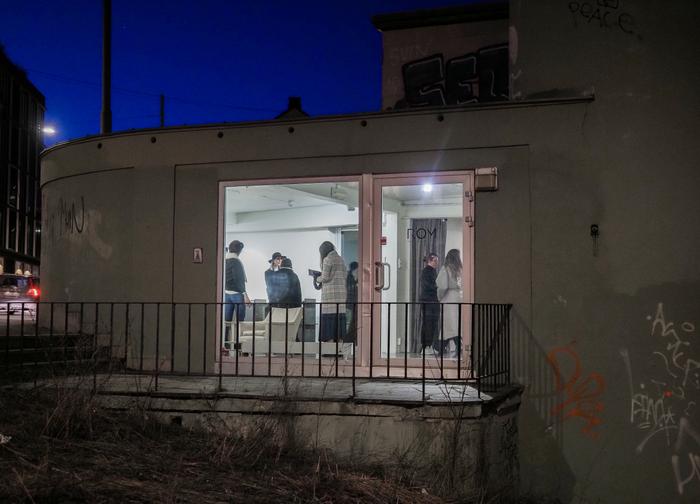The word “method”—or in Norwegian, metode—comes from Ancient Greek and means “the way to follow.” In the field of art and architecture, the term refers to the work process behind the work, while in a research context the term refers to the work process behind the research result. Although the term is often associated with precision, planning, and positioning, the term also implies challenges, unpredictability, and the unknown. Metode by ROM for kunst og arkitektur is a gathering place for work‑ and text-based thinking in art and architecture where the path is more important than the ultimate goal.
The gathering place ROM for kunst og arkitektur (2022), Maridalsveien 3, Oslo.
Citation (Chicago 17th footnote/endnote):
Editorial Board, “Risk, Orientation, Method.” Metode by ROM for kunst og arkitektur (2022). https://metode.r-o-m.no/en/articles/essay/risk-orientation-method.
I. Risk
Working with art and architecture is advanced thinking. Thinking with art, design, and architecture is a complex spatial practice at the intersection of precise methods, technical expertise, in-depth contextual knowledge, and unpredictable results, where knowledge requires time and patience—both by those who practice this form of thinking and by those who interact with it.
Although the word “philosophy” comes from Ancient Greek and means love of knowledge, there are other parallels between thinking and love. The Canadian poet Anne Carson compares art to a language between lovers. With a fragment of the Ancient Greek poet Sappho’s love poem as a starting point, Carson writes that desire is always conditioned by incompleteness. She believes the difference between lovers is necessary to activate desire. The French philosopher Alain Badiou also writes that love has several essential qualities: love can make us endure the difficult, incomplete, and risky. Badiou believes that love is the opposite of a social and cultural ideal, where protection against discomfort and difficult feelings is the norm. Love is difficult to control, impossible to plan, and can end every day, Badiou writes. It challenges us to be exposed, honest, generous, patient, to trust others, and to be open to change.
As such, love has parallels to the essence of art. Both love and art contain unpredictable processes where the result can be something other than the starting point. Thinking with art and architecture involves both risks and failures, but these are seen as prerequisites for making breakthroughs.
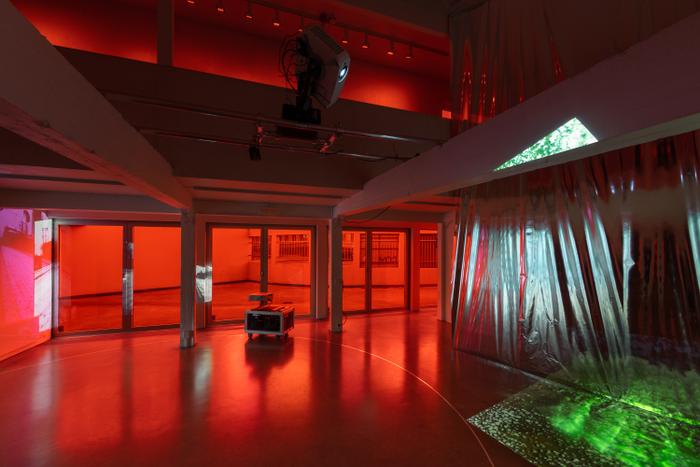
Bull.Miletic, Time to Reflect Reality (2021) as part of the exhibition “Urban Ecologies” at ROM for kunst og arkitektur. Photo: KUNSTDOK / Tor S. Ulstein
Petrine Vinje/Olaf T. Hodne, Objective Enactive, as part of the exhibition and artistic research project Urban Ecologies (2021) at ROM for kunst og arkitektur. Video by Rickard Aall. Edit: Petrine Vinje
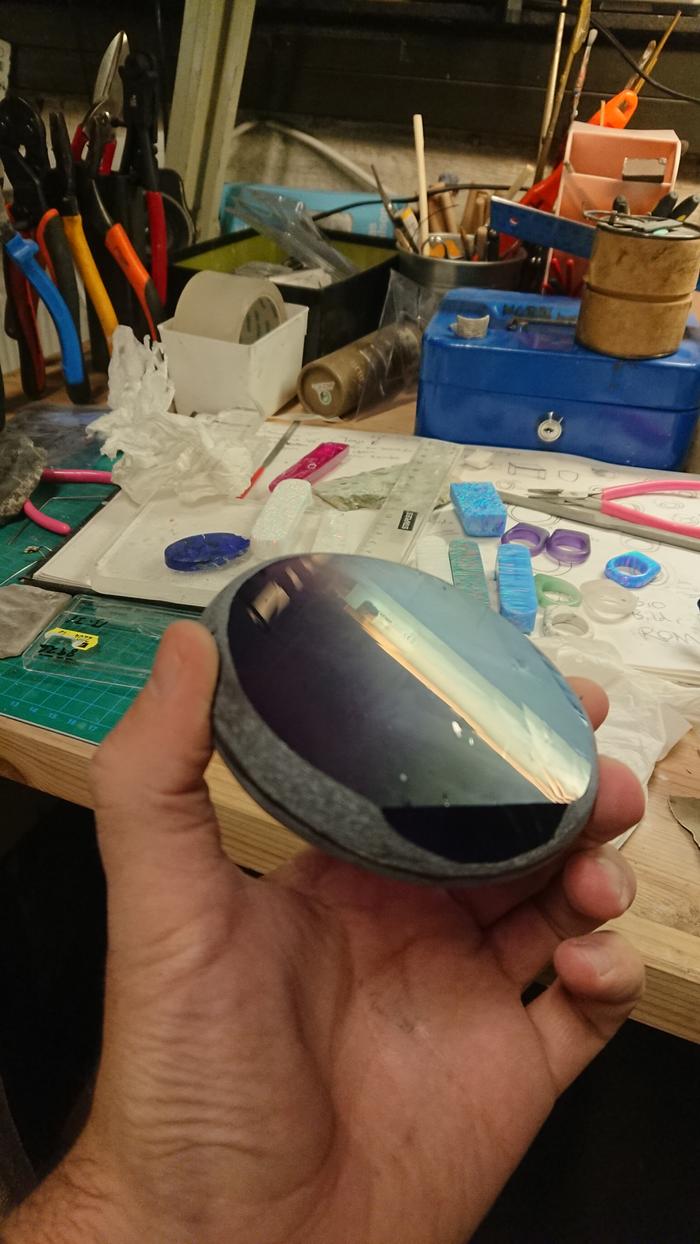
Work in process Objective Enactive by Petrine Vinje/Olaf Tønnesland Hodne (2021) as part of the exhibition and research project Urban Ecologies by Bull.Miletic
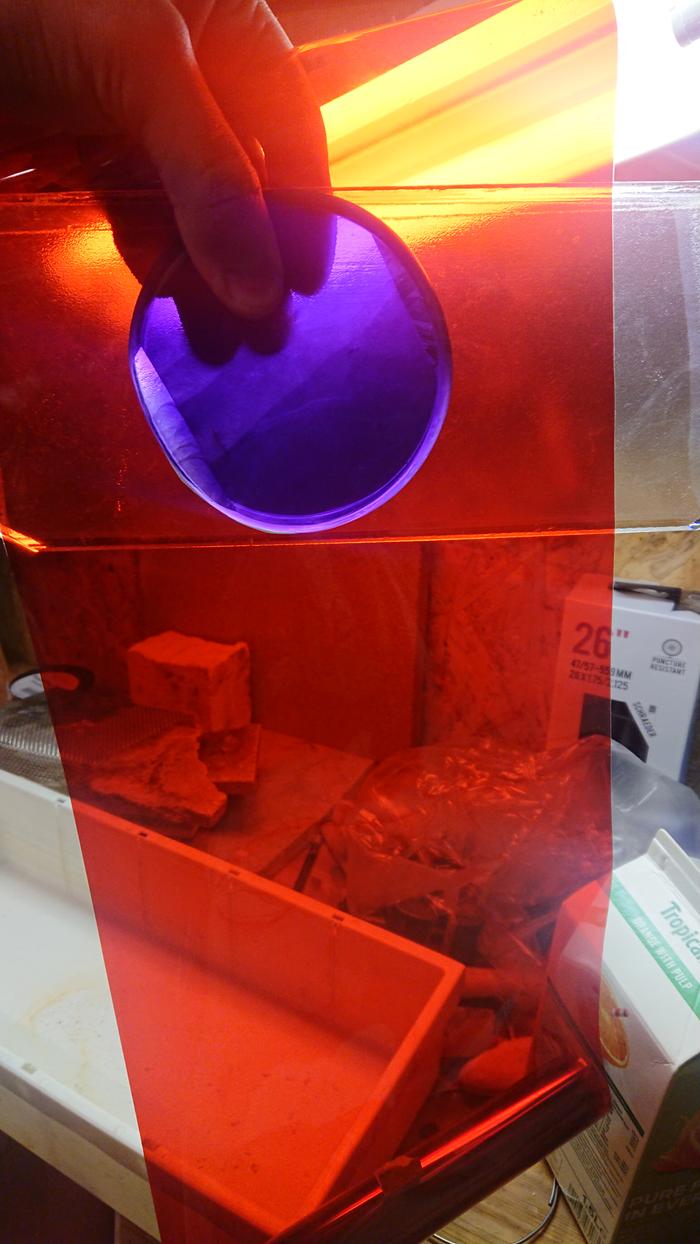
II. Orientation
“Artistic research” and “research-by-design” have in recent years been established as key concepts in the fields of art and architecture. These are practices where the traditional work (material or intangible) is not an end point, but instead a process-based project where the work becomes part of a complex context with specific references, which often position themselves in relation to specific knowledge traditions. This turn in the field of art and architecture is particularly linked to the establishment of doctoral degrees in artistic development work, and especially in recent national and international investments in PhD programs with training components in theory and method. In the field of art and architecture, however, there is an ongoing discussion about what artistic research and research-by-design actually means and how research through and with art and architecture differs from artistic work or design practice in itself.
In his novel The Map and the Territory, the French author Michel Houellebecq draws parallels between art and a map. A map is a representation of a landscape, but it does not always strive for objective representation: it can be imaginary, speculative, and subjective—and is always open to interpretation. However, a map can also be useless; the Argentine author Jorge Luis Borges describes how a giant map covers the entire area the map is meant to represent and thus replaces the actual truth (landscape) with a gigantic sign (the map). In order to orient ourselves in an increasingly simulated reality in which truth is relative—in politics, in war, and in research—we need a tool for orientation. We need a compass. An orientation tool (for instance a legal act) requests an ethical obligation, both from those who state the premises of the orientation and from those who operationalize it. But even if a compass indicates a direction, there is no requirement to follow the most effective path. The Scandinavian sport orienteering, for instance, often takes place in rough terrain—off the beaten track—where the competitor combines knowledge from the map, the terrain, and the compass to make creative choices for finding a way.
Working with artistic research or research-by-design entails an ethical obligation to reveal how the creative pathfinding choices are made. In other words, an ethical obligation to method will cause the researcher to be held responsible for the orientation. This builds a trust that encourages criticism. As such, method makes artistic research and research-by-design more risk-oriented.
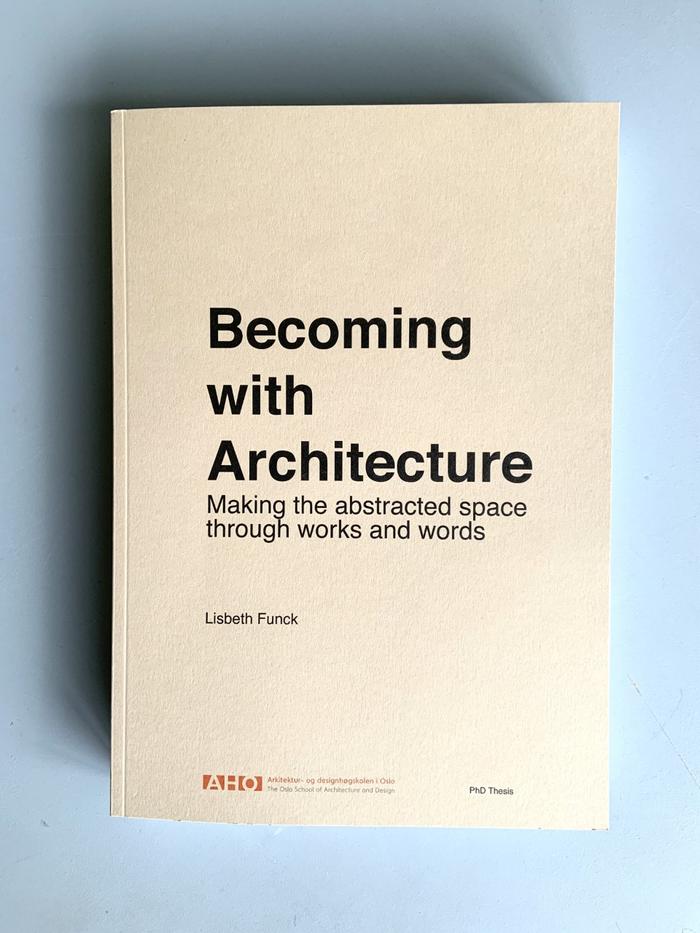
Lisbeth Funck, «Becoming with Architecture: Making the Abstracted Space Thourgh Works and Words», PhD thesis at the Oslo School of Architecture and Design (2022).
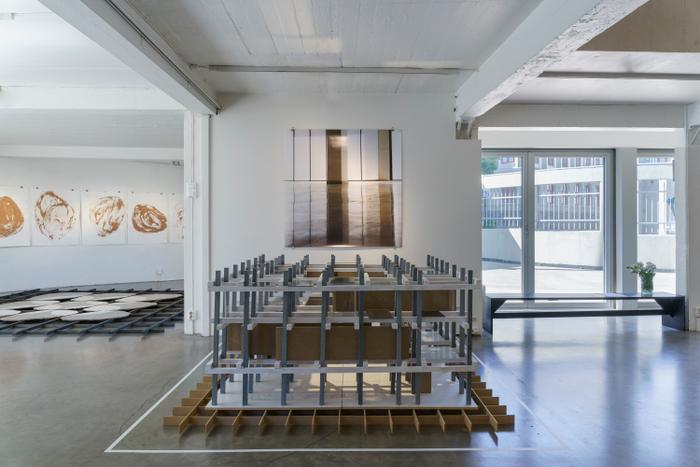
Lisbeth Funck, «Becoming with Architecture» final PhD exhibition at ROM for kunst og arkitektur (2021). Photo: ROM for kunst og arkitektur

Lisbeth Funck, Assembly of nine slabs on a grid marked by four circles. Dimensions grid: 3650x3650 mm. Dimensions assembly: 3300x3300. «Becoming with Architecture» at ROM for kunst og arkitektur (2021). Photo: Lisbeth Funck
III. Metode
The term “research methodology” in the field of art and architecture often operates within the framework of public educational institutions. But within this framework, the advanced thinking about art and architecture must relate to measurable and performance-driven parameters such as impact, feasibility, and risk-management factors. When risk management, however, governs the financing possibilities of a research project, this breaks radically with the essence of art of being ambiguous, without a clear goal, and to seek the unsafe. When the expected results of the research must be formulated in advance—through detailed implementation plans—to secure funding, this breaks with the essence of research of seeking radically new, often unforeseen, breakthroughs. Therefore, independent institutions which are not conditioned by performance-driven risk management factors are needed, where artists, architects, researchers, historians, and theorists can explore complex issues through co-creation that requires time, patience, and trust to build.
ROM for kunst og arkitektur aims to create good conditions for an in-depth production and reflection environment for art and architecture. Since 2005, ROM has been an active and experimental arena for the field of architecture, and in 2020 the institution started a long-term change process by building a unique method for exploring the field of art and architecture that challenges established notions of exhibitions, works, and text as end points. Instead of an end point, the institution is a generous gathering place for work processes, collaborations, disagreements, and differences. One element in this long-term and targeted exploration is the platform Metode, which is a gathering place for work processes within work-based and text-based research that challenges conventional knowledge institutions by creating a risk-oriented framework for in-depth production conditions.
Metode is an experimental gathering place for in-depth research and generative discursive practice run by ROM for kunst og arkitektur, in which new professional ties are established: between the arts field, cultural institutions, and research and educational institutions; between young voices and established scholars; and between Norwegian and international professionals and disciplines. Contributors meet over several workshops and provide feedback on each other’s ideas, text, and work drafts. Through such an open feedback process—based on trust and professional integrity—Metode challenges conventional academic publishing venues where feedback is given anonymously, in closed rooms. Metode is a generous gathering place for thinking with art and architecture based on a risk-oriented method where inequality generates unpredictability, where precision opens up for criticism, and where co-creative work processes can form turning points.
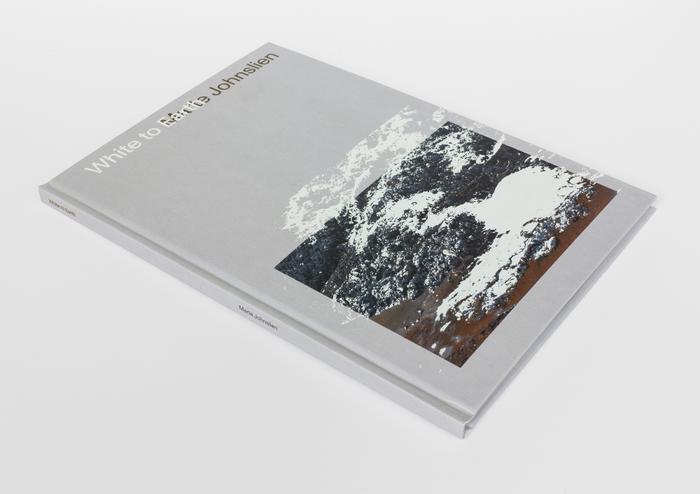
Marte Johnslien, White to Earth (ROM Forlag, 2020). Design: Carl Gürgens
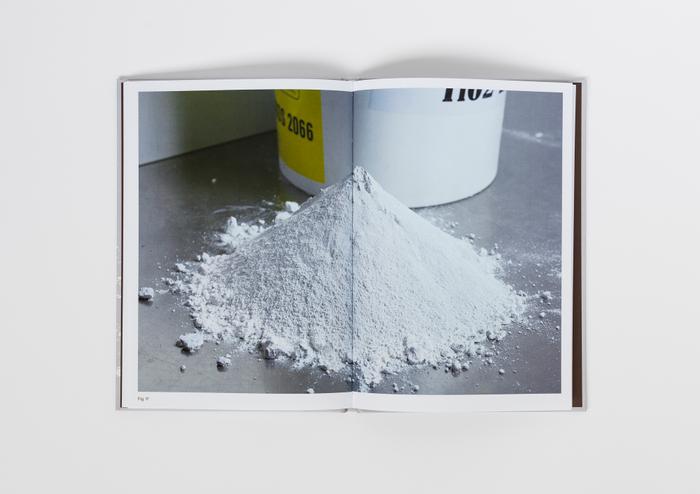
The book was published by ROM for kunst og arkitektur and won the award ‘Norway’s Most Beautiful Book’ in 2021: https://www.grafill.no/avb/vinnere/2021/fotobok-kunstbok/fotobok-kunstbok/white-to-earth (Photo book/Art book)
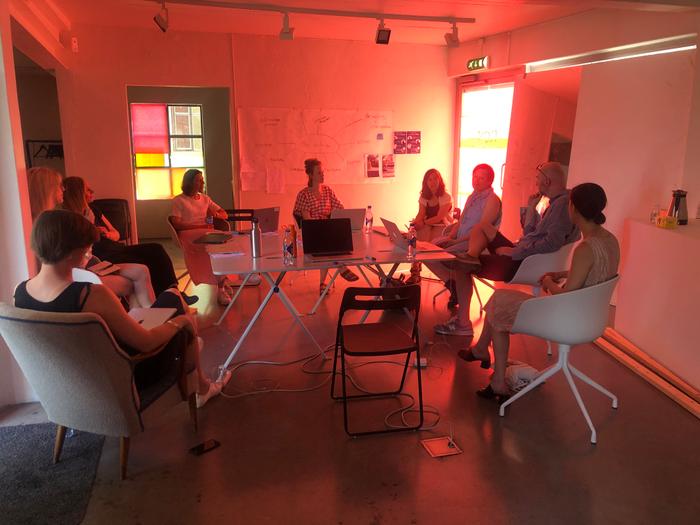
Workshops with Bull.Miletic, ROM for kunst og arkitektur(2020). See www.urbanecologies.net
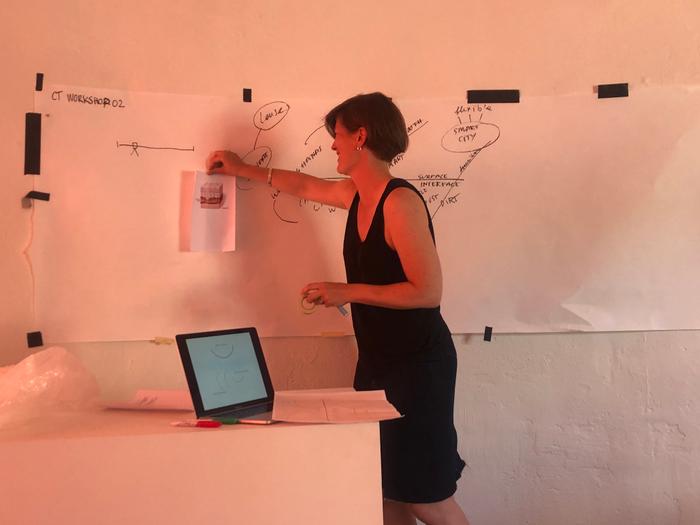
The open feedback workshops by Bull.Miletic were fundamental for developing Metode
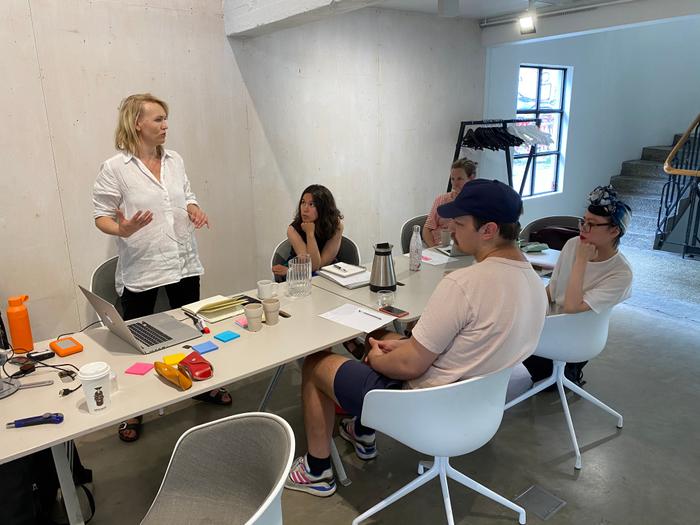
Bull.Miletic are visual artists and researchers Synne T. Bull (PhD) and Dragan Miletic
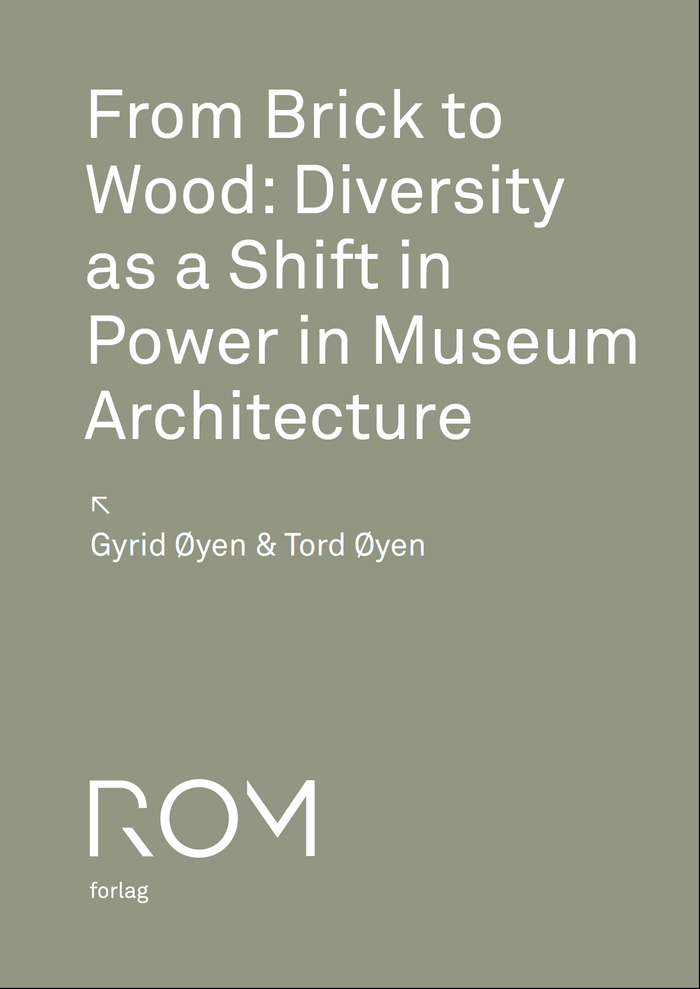
The academic article "From Brick to Wood: Diversity as a Shift in Power in Museum Architecture" by siblings Gyrid Øyen (cultural theorist at UiT) and Tord Øyen (architect at Byarkitekten i Bergen) was published by ROM for kunst og arkitektur in 2021.
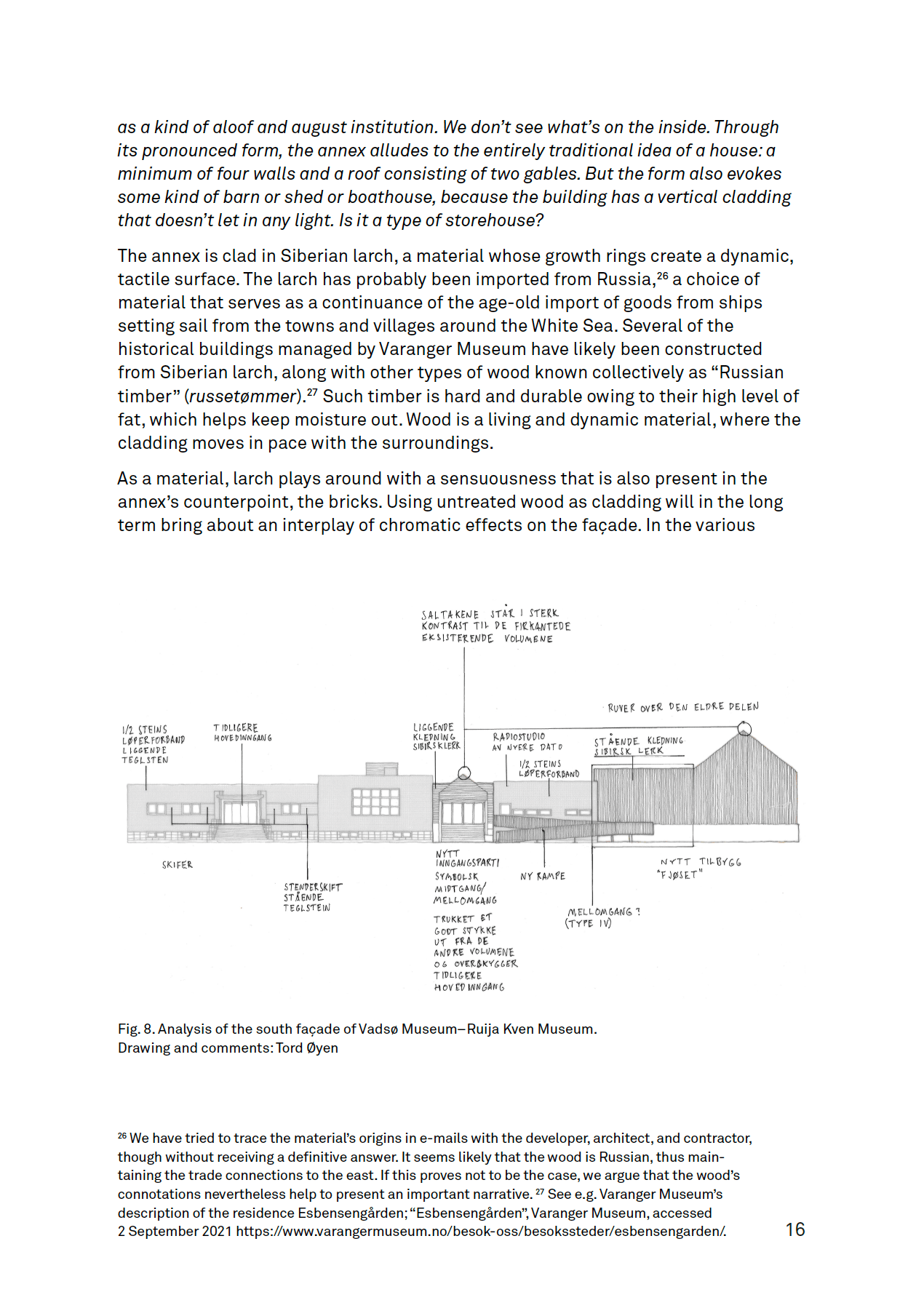
Øyen and Øyen explored the possibilities and challenges of co-creation and co-writing methods for developing the article. This working process was fundamental for developing Metode.
References
Badiou, Alain, with Nicolas Truong. In Praise of Love. New York: New Press, 2012.
Borges, Jorge Luis. “On Exactitude in Science.” In Labyrinths: Selected Stories and Other Writings (London: Penguin Books, 2000).
Carson, Anne. Eros the Bittersweet: An Essay. Princeton, NJ: Princeton University Press, 1986.
Johnslien, Marte. White to Earth. Oslo: ROM forlag, 2020.
Houellebecq, Michel. The Map and the Territory. London: William Heinemann, 2011.
Øyen, Gyrid, and Tord Øyen. “From Brick to Wood: Diversity as a Shift in Power in Museum Architecture.” Metode by ROM for kunst og arkitektur (2021).
